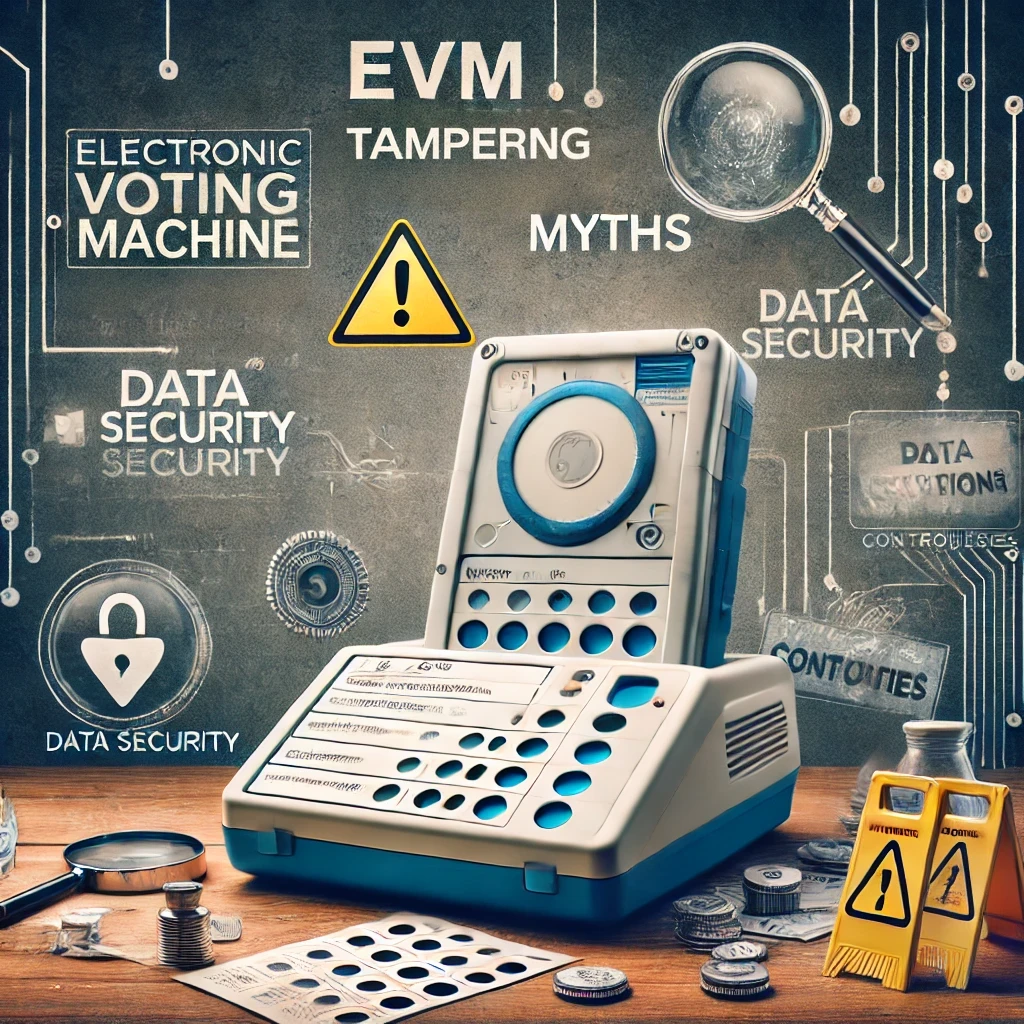
In “The Verdict: Decoding India’s Elections,” Prannoy Roy and Dorab R. Sopariwala address and debunk the myths surrounding the tamperability of Electronic Voting Machines (EVMs) in India. The book meticulously explains how EVMs are designed, the security protocols in place, and the layers of scrutiny they undergo to ensure the integrity of the electoral process. Here’s an elaborate breakdown:
1. Technical Design and Security of EVMs
Standalone Nature of EVMs
Roy and Sopariwala emphasize that Indian EVMs are standalone devices with no network connectivity. This means they are not connected to any form of external communication such as:
- Internet Connectivity: EVMs are not linked to the internet, preventing any remote hacking attempts.
- Bluetooth: They lack Bluetooth capabilities, ensuring they cannot be accessed wirelessly.
- Wi-Fi or Any Other Network: EVMs do not have Wi-Fi or any other networking hardware, making them isolated and secure from external tampering.
One-Time Programmable (OTP) Chips
The EVMs use OTP microchips that can only be programmed once and cannot be reprogrammed. This feature ensures that once the software is embedded, it cannot be altered, preventing any post-manufacturing modifications or tampering.
Dynamic Coding
The software within EVMs employs dynamic coding techniques. This further complicates any attempt to manipulate the code, as the dynamic nature of the code means it is not static and predictable.
2. Physical Security Measures
Sealed and Secure
EVMs are sealed with tamper-evident seals. If an EVM is tampered with, the seal will show clear evidence of such tampering. These machines are stored in secure facilities guarded by security personnel, ensuring they are safe from unauthorized access.
Transport and Storage Protocols
EVMs are transported and stored with strict security protocols. They are moved under the watchful eye of election officials, often accompanied by representatives from political parties. They are stored in strong rooms with multiple layers of security, including physical barriers and surveillance.
3. Rigorous Testing and Mock Polls
Pre-Election Testing
Before every election, EVMs undergo rigorous testing procedures. This includes:
- Mock Polls: Conducted in the presence of political party representatives to demonstrate the machine’s accuracy and functionality.
- First Level Checking (FLC): Detailed inspection and testing of EVMs by engineers to ensure they are in perfect working condition.
Randomization and Allocation
EVMs are allocated to polling stations through a two-stage randomization process. This random allocation ensures that no one knows in advance which machine will be used at which polling station, making targeted tampering virtually impossible.
4. Transparency and Oversight
Public Scrutiny
Political party representatives and candidates are allowed to participate in the testing and sealing processes, providing transparency and building trust in the system.
Judicial and Administrative Oversight
The Election Commission of India (ECI) and the judiciary oversee the entire election process. Any grievances or allegations of tampering are addressed through thorough investigations, maintaining the credibility of the electoral process.
5. Empirical Evidence and Analysis
Pattern Consistency
The book presents detailed analyses of voting patterns across multiple elections. The consistency and randomness in results make it statistically improbable for EVMs to have been tampered with.
Case Studies
Specific instances where allegations of EVM tampering were made are examined. Investigations into these allegations have consistently found no evidence of tampering, reinforcing the reliability of EVMs.
6. International Endorsements
Global Standards Compliance
Indian EVMs meet high international standards for electronic voting. They have been reviewed and praised by international observers and organizations for their robustness and reliability.
Observer Reports
Reports from international observers who have monitored Indian elections affirm the integrity of the EVM-based electoral process. These endorsements add credibility to the security claims made by Indian authorities.
In “The Verdict: Decoding India’s Elections,” Prannoy Roy and Dorab R. Sopariwala provide a comprehensive debunking of the myths surrounding EVM tampering. They detail the technological, physical, procedural, and empirical safeguards in place that ensure EVMs are secure and reliable. By emphasizing the standalone nature of EVMs, the rigorous security protocols, and the layers of transparency and oversight, the authors convincingly argue that EVMs cannot be tampered with, thus maintaining the integrity of India’s electoral process.

Kalyan Chandra
Kalyan chandra is a political strategist, media and communication consultant with the expertise in public relations, marketing, political research, election campaign management, psephology and digital analytics. He focuses on strategic political consulting, offering services that include competitive research, public opinion collection, and digital media management. Kalyan has significantly contributed to successful campaigns across India with his meticulous approach and deep understanding of the political landscape.
Related posts:
- Safeguarding the Sanctity of Indian Elections: The Impenetrable Fortress of Electronic Voting Machines (EVMs)
- Congress Party Manifesto – Telangana 2018 Assembly Elections (Text)
- Political Message Testing
- High Voter Turnout: Debunking the Myth of Anti-Incumbency
- History of Parliement Elections in India – Phases, Statistics & Trivia
- Data Analytics in Indian Political Campaigns: A Comprehensive Guide for Effective Strategy and Outreach
